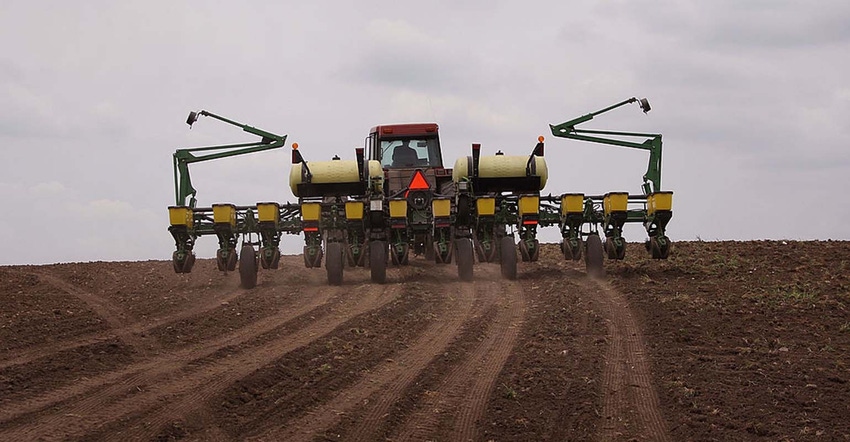
There is a battle brewing for 2021 acres, and 90 million for either corn or soybeans might not cut the mustard.
USDA’s WASDE December update made no changes from November, but we feel additional adjustments are necessary to export demand as we look ahead to January’s report.
The current tally for corn sales to China for the 20/21 marketing year is roughly 19 million metric tonnes. This statement assumes that 30% of the sales to “Unknown” are actually to China and that Ukraine has sold the same 5.5MMT to China that they did last year. No exporter is offering corn beyond January as of this week.
Without a major weather event, Chinese corn demand for the remainder of the marketing year is likely the key to seeing corn trade at or above $5/bu. We feel that most of the additional corn procurement by the Chinese will be of US product, and that the Chinese could import a total of 20-27MMT by the end of the marketing year to get their stocks back to levels seen between 2015 & 2019. An additional 8MMT of Chinese imports would increase our corn exports for the year by just over 300 million bushels, taking total to as high as 2.962 billion bushels.
Without any changes to production or the other demand categories, this would drop carryout to 1.39 billion bu. and a stocks-to-use percentage below 10%, which has historically meant $5-plus corn.
Let’s say reality is in between the current 19 MMT total and the 27 MMT potential target at a conservative 22 MMT; this increases exports to 2.765 billion bu., and drops carryout to 1.587 billion bu. We will carry this assumption into the next thought process.
Some history helps
Plantings of corn and soybeans in 2017 reached a combined 180.342 million acres with producers planting 90.2 and 90.1 million acres, respectively. Similar to the current yield assumption for the 2020 corn crop of 175.78 bu.per acre, the 2017 corn crop yielded 176.65 bpa which was a record yield at the time. And yet, stocks did not build that year with demand the main culprit; total usage reached 14.799 billion bushels.
We just walked through a very possible scenario where 20/21 stocks drop further, so let’s look at what the implications are for next year’s production if we plant 90 million acres.
If we assume stocks drop to 1.587 bb and that ends up being the beginning stocks for 21/22, we also need to make some demand assumptions. Let’s use WASDE’s current usage number for the 20/21 season at 14.825 bb which would be down year-over-year if everything we just discussed regarding China comes to fruition.
Read this next part very carefully.
Planting 90 million acres of corn with a record 182 bpa yield would only build stocks by 100 million bu.
If yield ended up like this year around 176 bpa, stocks would actually drop to 1.2 billion bu., and price rationing would need to occur to ration some of the demand we are assuming.
Given these same assumptions on carry-in and demand, it would take a 187 bpa crop with 90 million acres planted to get stocks back to 2 billion bu.
Soybean stocks tight
Soybeans stocks are tight and likely to get tighter in subsequent reports due to the current pace of export sales. But let’s be conservative for a second and use WASDE’s current 175 million bu. estimate as the carry-in for next year’s balance sheet. Planting 90 million acres with a 52 bpa yield would only increase stocks to 295 mb assuming demand is static year-over-year. If next year’s soybean crop matched this year’s current yield estimate of 50.7 bpa, well stocks increase a paltry 4 million bu.
The bottom line is that at 90 million planted acres for either crop, an above trend yield will be needed to grow stocks. If a legitimate weather threat emerges during our domestic growing season next summer, just the conversation of sub-trend yields should cause a rally in prices to ration demand.
We need to ration demand.
Feel free to contact me directly at 815-665-0463 or anyone on the AgMarket.Net team at 844-4AGMRKT
The risk of loss in trading futures and/or options is substantial and each investor and/or trader must consider whether this is a suitable investment. AgMarket.Net is the Farm Division of John Stewart and Associates (JSA) based out of St Joe, MO and all futures and options trades are cleared through ADMIS in Chicago IL. This material has been prepared by an agent of JSA or a third party and is, or is in the nature of, a solicitation. By accepting this communication, you agree that you are an experienced user of the futures markets, capable of making independent trading decisions, and agree that you are not, and will not, rely solely on this communication in making trading decisions. Past performance, whether actual or indicated by simulated historical tests of strategies, is not indicative of future results. Trading infromation and advice is based on information taken from 3rd party sources that are believed to be reliable. We do not guarantee that such information is accurate or complete and it should not be relied upon as such. Trading advice reflects our good faith judgment at a specific time and is subject to change without notice. There is no guarantee that the advice we give will result in profitable trades. The services provided by JSA may not be available in all jurisdictions. It is possible that the country in which you are a resident prohibits us from opening and maintaining an account for you.
The opinions of the author are not necessarily those of Farm Futures or Farm Progress.
About the Author(s)
You May Also Like




